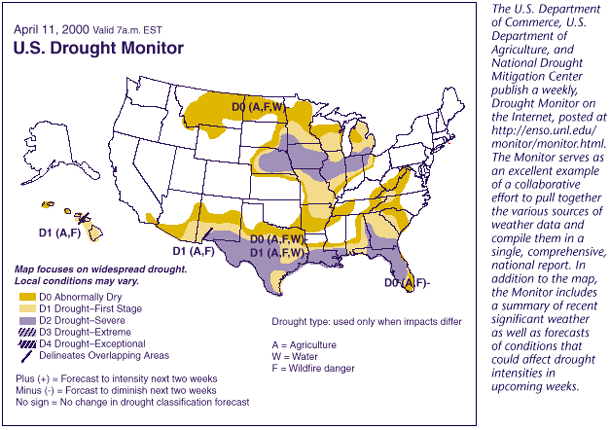|
|
| Return to Table of Contents |
we were told, are key to effective drought planning, proactive mitigation, emergency response, and drought-related technical assistance and training and therefore must be made readily and widely available. Exchanges of information among planners and decision-makers have helped determine the direction of drought-related research, and sharing of findings among research entities has helped promote many of the advances in drought-related research. The Commission heard that there are various opportunities to expand such collaborative and cooperative activities. We also heard that research benefits greatly from trained, skilled people who have a deep and abiding interest in drought-related issues. As technology and knowledge evolve, so does the need for a new generation of trained, skilled, and interested individuals. Insurance. It is evident from the information we received and assessments we conducted that even the best preparedness and proactive mitigation measures will not adequately address some drought-related risks. Small businesses such as marinas and water-based recreation enterprises, for example, are vulnerable to the impacts of drought. In addition, Main Street enterprises that rely heavily on income from agriculture or water-based recreation businesses suffer when those businesses lose income. Insurance is one approach
that individuals can choose to take on their own. The Small Business
Administration noted that business interruption insurance is available
in private insurance markets. However, it is generally not tailored to
the needs of small businesses in drought situations.
|
|
|

